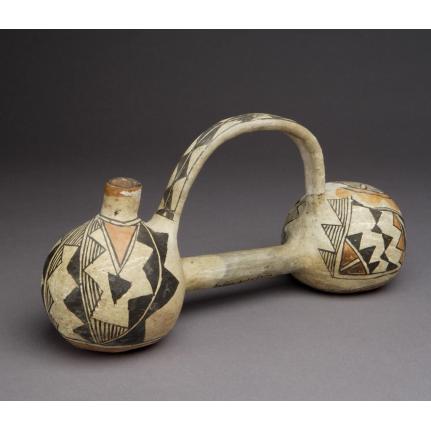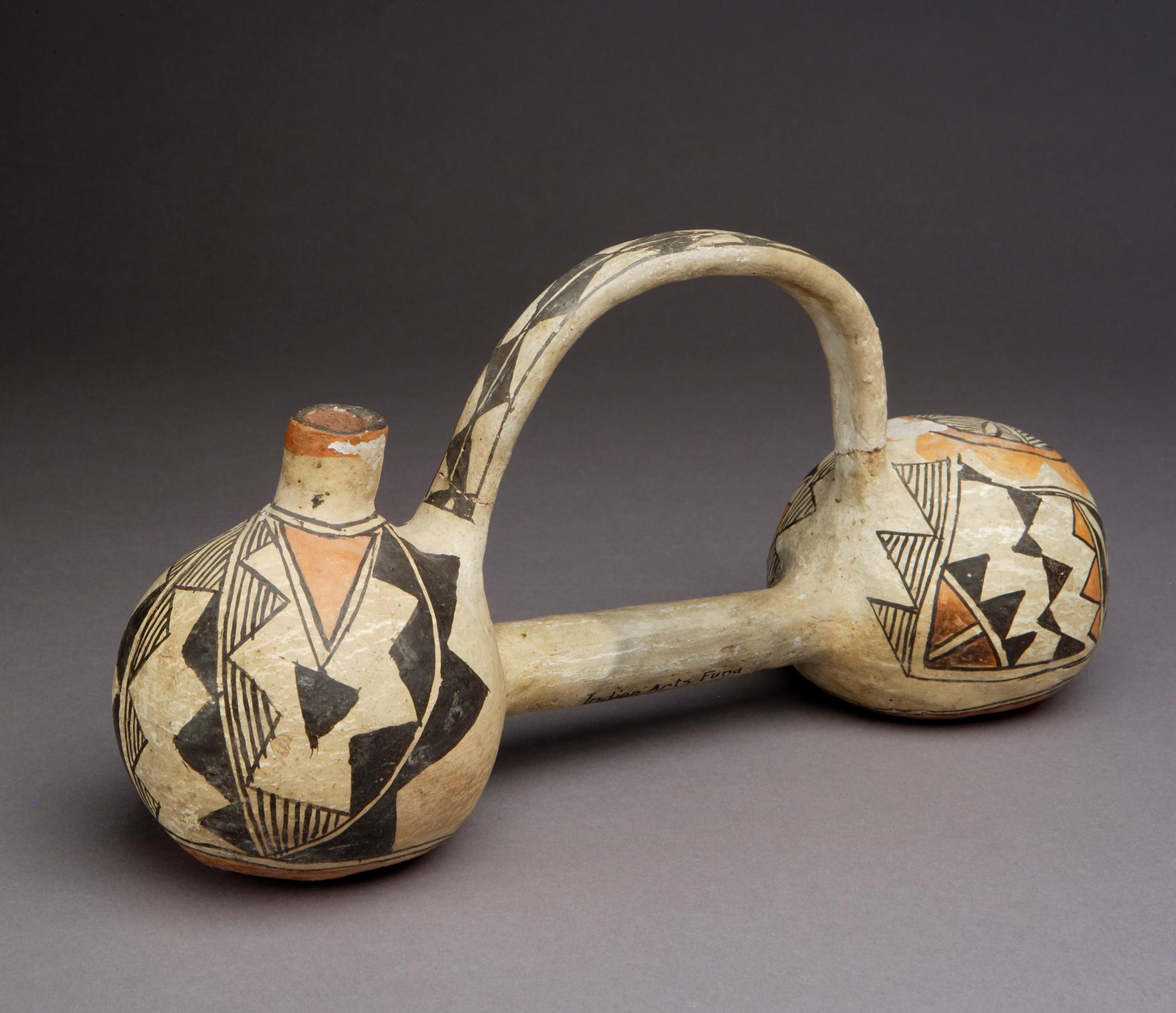
Photograph by Addison Doty. Copyright 2011 School for Advanced Research.
Photograph by Addison Doty. Copyright 2011 School for Advanced Research.
Canteen, double lobed
Date: 1900-1920
Artist or Maker: Unknown
Dimensions:
Dimensions: 16.5 × 33 × 8.9 cm (6 1/2 × 13 × 3 1/2 in.)
Weight: 0.9 kg (1.9 lb.)
Medium: clay | paints
Credit Line: Indian Arts Fund purchase for the permanent collection, 1930.
Place Made:
Valencia County, New Mexico, Southwest, United States, North America
Object Number: IAF.1423
Not on view
Tribal Collection Review RemarksAccording to the participants in the Acoma collection review visit November 29-30, and December 1, 2016 (Events Record “Collection Review: Acoma Pueblo Review 7”): The shape of this canteen is unusual. This is a three-color polychrome. There are no line breaks on this canteen. Nothing more was said about this canteen.
It was suggested that the Cultural Authorities from Acoma should be asked if unusual shapes like this may have a cultural use.
According to the participants in the Acoma collection review visit February 26-27, 2019 (Events Record “Collection Review: Acoma Pueblo Review 12”): Canteens are still being produced and used at Acoma today, in both traditional natural and commercial materials. There are several methods for constructing a canteen. One way is to make the canteen as a whole piece. Another method it to make two pieces and then join them, making a canteen. Another way is to build the majority of the body and later add on the top piece, which will include the spout. Some potters will inflate the canteen to expand its shape by blowing into it like a balloon. Flatter canteens are also referred to as flasks. Corn cobs or rolled corn husks were sometimes used to plug the spout.
The handles are usually added later before the main piece begins to dry. Handles are also made in a variety of styles including loops, braided or twisted loops, knobs, and bird heads.
Older canteens tend to have a more elaborate, all over design which extends onto the sides and handles. More recent canteens are designed on the front only and sometimes on the handles. The base of canteens, like water jars are slipped orange or red.
In Collection(s)
The Indian Arts Research Center, in collaboration with Native American community scholars, strives to present accurate collections records. Records may be updated as new information becomes available and is reviewed with the Native American community having cultural affinity to particular items. Please write to iarc@sarsf.org if you have questions or concerns related to the documentation.
